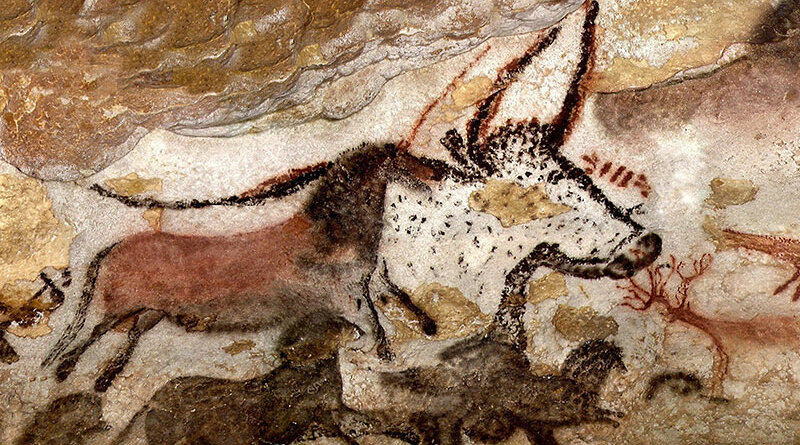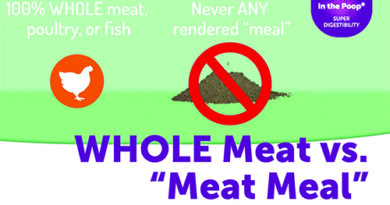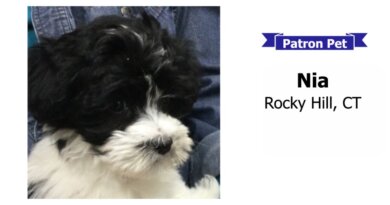From Wolves to Dogs: Give the Dog a Hindquarter
An old Cherokee and one of his granddaughters are sitting by the campfire. “There are two kinds of wolves in life, you know, that constantly fight each other: one is Hate, Suspicion, Hostility, Fear, and Violence; the other one is Love, Trust, Friendship, Hope, and Peace.”
The little girl stares into the fire for a while, then finally asks: “Which one of them wins?”
The old Cherokee doesn’t answer right away. When he breaks the silence, he says, “The one you choose to feed.”
—A tale currently making the rounds of German WhatsApp groups
As I pointed out in the book, How the Dog Became the Dog, and in subsequent postings to this blog, there are major problems with the widely accepted view that wolves were basically self-domesticated by feasting on the refuse of early humans then moving into semi-permanent settlements complete with midden piles—garbage dumps. When it subsequently came out that dogs first appeared in conjunction with prehistoric hunters and gatherers, proponents of the dump diving view simply replaced proto-farmers with hunters and gatherers without undertaking a serious revision of their theory. In the morphed version, proto-dogs, then, just got scraps from what the hunter-gatherers threw out or carelessly left behind. However, during the last glacial advance, early humans had no food to waste, and thus, it is not clear how or why wolves would have followed their encampments.
GET THE BARK IN YOUR INBOX!
Sign up for our newsletter and stay in the know.
On January 8, Scientific Reports published an article by Maria Lahtinen of the Finnish Food Authority and the Finnish Museum of Natural History, along with several colleagues, suggesting that Ice Age peoples actively fed fresh meat to wolves living in or near their encampments. Primarily these would have been wolves raised from pups they had captured as pets. The meat was excess because of the inability of humans to digest more than 20 percent of their caloric needs from animal protein. Eating too much lean meat makes people sick. The researchers suggest that during the Late Glacial Maximum during the height of winter, the ungulate prey like moose and reindeer—which themselves were going hungry—would have been quite lean. People, then, would focus on extracting the marrow or other organ meat for the fat, leaving some portion of the lean protein, which the humans could actively feed to wolves, who can live for longer periods of time on lean protein.
This is a nice theory, one that I like because it supports my own view. But it has some major problems. First, the researchers focus on the last few months of winter when prey is at its leanest, without addressing the question of whether humans would continue feeding meat to their wolves the rest of the year when, presumably, the fat content would be higher. Possibly, they still had excess meat because their diet expanded in late spring and summer to include fish like salmon and berries and other seasonal food. We know from studies that this was what the traditional diet of the Sami herding people of the circumpolar Arctic looked like. Or, were they killing to excess year-round to feed their proto-dogs?
Lahtinen et al. also commit the common error of people discussing dog domestication by assuming that between wolves and humans is an eternal enmity, in this case, borne of competition for the same resource. This implies that for domestication to occur, wolves had to change their nature from potential predators of humans to devoted, even slavish servants to them. This, of course, is not true. Humans and wolves have been working together and forming friendships since they met on the trail.
No matter what the settlement type was, the major problem with the dump diver theory was that it leaves half of the equation out—that is, the human element. It has always seemed to me as silly to claim that wolves were solely responsible for the creation of dogs, as it is to claim that humans were solely responsible for dogs’ creation. Obviously, there has to be a coming together that is mutually decided upon by individual humans and wolves or by groups or packs of both. In a real sense, then, the creation of dogs is a cultural as much as a biological event, altering both dog and human cultures. In this view, animals clearly identifiable by morphology as dogs emerged sometime in the run-up to the Late Glacial Maximum, about 14,000-40,000 years ago from populations of wolves. When the ice began to melt, they went walkabout with their people, spreading across Europe. As they entered new territory, they doubtless interbred with local wolves.
My take on this process of wolves becoming dogs was based on the reading of the genetic and archaeological evidence produced to date. There are, in the anthropological literature, examples of indigenous people following wolves (and dingoes) on the hunt. It’s easy to see how this occurred because wolves, with their keen sense of smell and speed of foot, are great at tracking prey; however, they are far less adept at killing what they have pursued. In this event, the wolf-following humans, who happen to be efficient surplus killers at a distance, moved in and completed the hunt. They would reward their unwitting compatriots with cuts of meat they didn’t want or could not carry. There is nothing unique or unusual about this; human hunters are also known to follow ravens to wolf kills.
My point here is that humans may well have formed loose alliances with wolves for thousands of years before the morphological dog appeared. Humans would have interacted with adult wolves, not puppies they took in. Wolves would have tolerated the human followers because they learned they would be rewarded in the end. In cases where humans did capture wolf puppies, by stealing them from the den or taking them in when parents were killed, the animals may have hung around, but probably often left once they reached breeding age. You still have the problem, then, of where the population of proto-dogs comes from. A possibility is that the wolves who are being used as stalking animals do begin to maintain dens in proximity to human habitations. Humans might also have established camps near the dens of friendly wolves. The species then became allied over time because of their proximity and usefulness to each other.
Some support for this notion comes from another Scientific Reports paper published by Rita Lenkei et al., from Eötvös Loránd University, Budapest, Hungary. They found that adult wolves show signs of anxiety when they are separated from their handlers, who are not necessarily the people who nurtured them as pups. That suggested to Lahtinen and colleagues that most of the affinity for the handler has its roots in the pack structure of wolves.
As has been shown time and again with other species, adult wolves, if they are so inclined, will relate peacefully with humans as long as the humans let them make the first approach. This evidence has suggested to me that domestication involves not coercion but mutual respect and tolerance and is a matter of degree, not kind. Not all animals will make the effort, and not all humans are prepared to receive the proffered friendship.




